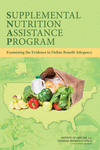For many Americans who live at or below the poverty threshold, access to healthy foods at a reasonable price is a challenge that often places a strain on already limited resources and may compel them to make food choices that are contrary to current nutritional guidance. To help alleviate this problem, the U.S. Department of Agriculture (USDA) administers a number of nutrition assistance programs designed to improve access to healthy foods for low-income individuals and households. The largest of these programs is the Supplemental Nutrition Assistance Program (SNAP), formerly called the Food Stamp Program, which today serves more than 46 million Americans with a program cost in excess of $75 billion annually. The goals of SNAP include raising the level of nutrition among low-income households and maintaining adequate levels of nutrition by increasing the food purchasing power of low-income families.
